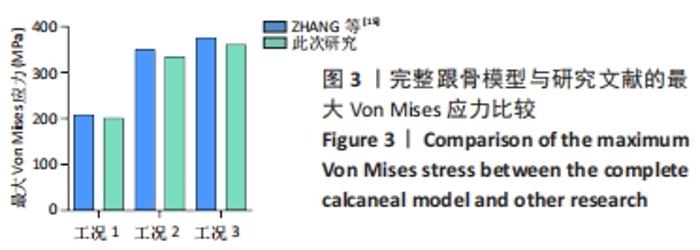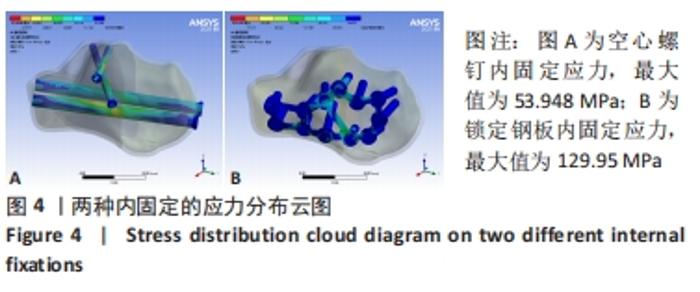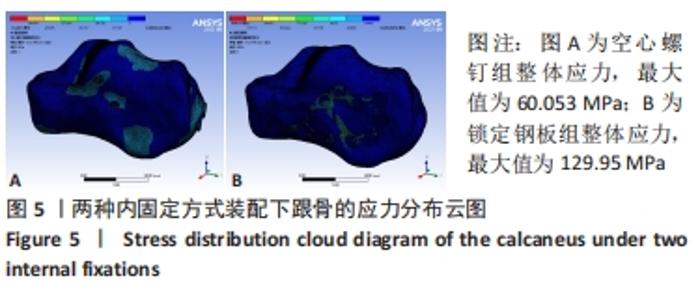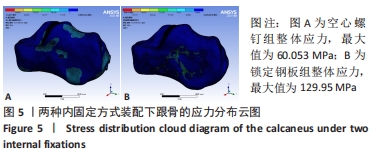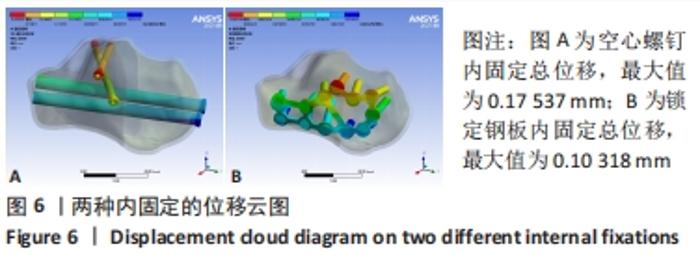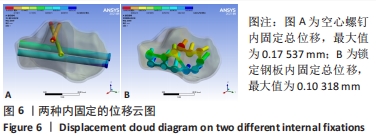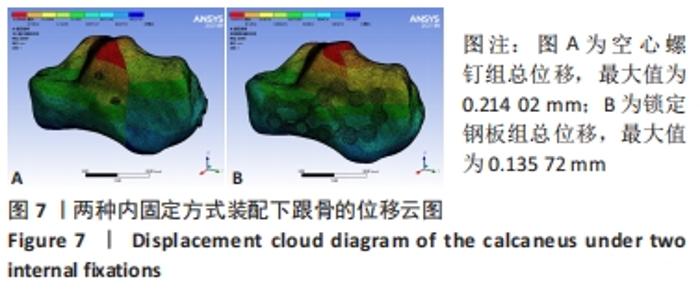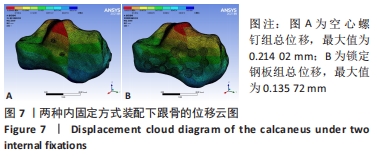[1] ALLEGRA PR, RIVERA S, DESAI SS, et al. Intra-articular Calcaneus Fractures: Current Concepts Review. Foot Ankle Orthop. 2020;5(3): 247301142092733.
[2] POTTER MQ, NUNLEY JA. Long-term functional outcomes after operative treatment for intra-articular fractures of the calcaneus. J Bone Joint Surg Am. 2009;91(8):1854-1860.
[3] 许隆,曾展鹏,陈梓杰,等.股骨近端防旋髓内钉治疗股骨转子间骨折主钉断钉失效:有限元仿真模型构建及有效性验证[J].中国组织工程研究,2021,25(30):4839-4844.
[4] 张成宝,余润泽,喻德富,等.有限元分析股骨颈骨折伴下后方不同程度骨缺损空心螺钉内固定后的稳定性[J].中国组织工程研究,2020, 24(18):2799-2804.
[5] 陈钵,秦大平,张晓刚,等.有限元分析法在脊柱生物力学中的研究进展[J].中国疼痛医学杂志,2020,26(3):208-211,216.
[6] 甘东浩,乔全来,陈德强,等.Waveflex半刚性内固定治疗腰椎间盘突出症的生物力学优势[J].中国组织工程研究,2019,23(36):5830-5835.
[7] 林娟颖,刘晓颖,邢立杰,等.基于有限元法的跟骨生物力学分析[J].医用生物力学,2018,33(1):37-41.
[8] 倪鹏辉,张鹰,杨晶,等.临床骨科中应用的有限元分析法:新理论与新进展[J].中国组织工程研究,2016,20(31):4693-4699.
[9] 倪明,牛文鑫,梅炯.交叉螺钉与钢板内固定治疗Sander Ⅲ型跟骨骨折的有限元分析[J].医用生物力学,2015,30(6):501-505.
[10] 郭宗慧,庞清江,刘江涛,等.载距突螺钉内固定治疗SandersⅡ型跟骨骨折的生物力学研究[J].中华骨科杂志,2013,33(4):331-335.
[11] SITTHISERIPRATIP K, VAN OOSTERWYCK H, VANDER SLOTEN J, et al. Finite element study of trochanteric gamma nail for trochanteric fracture. Med Eng Phys. 2003;25(2):99-106.
[12] 杨攀,章莹,刘坚,等.锁定钢板内置和外置固定Sanders Ⅱ型跟骨骨折的三维有限元分析[J].中国临床解剖学杂志,2014,32(6):716-720.
[13] 张雷蕾,王盟圣,徐大伟,等.足部三维有限元建模及其多姿态生物力学分析[J].中国组织工程研究,2021,25(30):4799-4804.
[14] CHEN CH, HUNG C, HSU YC, et al. Biomechanical evaluation of reconstruction plates with locking, nonlocking, and hybrid screws configurations in calcaneal fracture: a finite element model study. Med Biol Eng Comput. 2017;55(10):1799-1807.
[15] ZHANG H, LV ML, LIU Y, et al. Biomechanical analysis of minimally invasive crossing screw fixation for calcaneal fractures: Implications to early weight-bearing rehabilitation. Clin Biomech (Bristol, Avon). 2020;80:105143.
[16] LAW GW, YEO NE, YEO W, et al. Subtalar arthroscopy and fluoroscopy in percutaneous fixation of intra-articular calcaneal fractures. J Orthop Surg (Hong Kong). 2017;25(1):2309499016684995.
[17] COTTOM JM, BAKER JS. Restoring the Anatomy of Calcaneal Fractures: A Simple Technique With Radiographic Review. Foot Ankle Spec. 2017; 10(3):235-239.
[18] YOUSEF A, ABDULLAH S, HANAN A, et al. Calcaneal fractures in a trauma center: A retrospective study. Journal of Musculoskeletal Surgery and Research. 2021; 5(2): 116-120.
[19] SHAMS A, GAMAL O, MESREGAH MK. Minimally Invasive Reduction of Intraarticular Calcaneal Fractures With Percutaneous Fixation Using Cannulated Screws Versus Kirschner Wires: A Retrospective Comparative Study. Foot Ankle Spec. 2021:1938640020987750.
[20] EBRAHIMPOUR A, KORD MHC, SADIGHI M, et al. Percutaneous reduction and screw fixation for all types of intra-articular calcaneal fractures. Musculoskelet Surg. 2021;105(1):97-103.
[21] DIRANZO-GARCÍA J, BERTÓ-MARTÍ X, CASTILLO-RUIPEREZ L, et al. Treatment of intraarticular calcaneal fractures by reconstruction plate. Results and complications of 86 fractures. Rev Esp Cir Ortop Traumatol (Engl Ed). 2018; 62(4):267-273.
[22] 胡凯,乔晓红,张永红,等.空心螺钉和钢板内固定修复移位型跟骨关节内骨折:基于15篇随机对照试验的Meta分析[J].中国组织工程研究,2021,25(9):1465-1470.
[23] 林文琛,林伟东,王育新.斯氏针撬拨闭合复位轴向结合横向多枚中空钉内固定修复跟骨骨折[J].中国组织工程研究,2015,19(53):8591-8596.
[24] SHAMS A, GAMAL O, MESREGAH MK. Outcome of Minimally Invasive Osteosynthesis for Displaced Intra-articular Calcaneal Fractures Using Cannulated Screws: A Prospective Case Series. J Foot Ankle Surg. 2021; 60(1):55-60.
[25] VAJGEL A, CAMARGO IB, WILLMERSDORF RB, et al. Comparative finite element analysis of the biomechanical stability of 2.0 fixation plates in atrophic mandibular fractures. J Oral Maxillofac Surg. 2013;71(2):335-342.
[26] 马超,王成伟,唐国柱.微创技术与开放手术治疗SandersⅡ、Ⅲ型跟骨骨折的疗效比较[J].中华骨科杂志,2020,40(21):1443-1452.
[27] 黄平,陈先进,郭艳幸,等.撬拨复位空心钉内固定治疗SandersⅡ型跟骨骨折[J].中国骨伤,2020,33(10):965-969.
[28] 马晓东,孙宏桥,马晓松,等.切开复位内固定和经皮撬拨复位内固定治疗Sanders Ⅱ型跟骨骨折的比较研究[J].中国骨与关节损伤杂志, 2017,32(8):882-884.
[29] 李景光,陈先进,吕维宝,等.经皮撬拨复位空心螺钉与切开复位钢板内固定治疗Sanders Ⅱ、Ⅲ型跟骨骨折的比较[J].中国矫形外科杂志, 2016,24(16):1449-1455.
[30] SAMPATH KUMAR V, MARIMUTHU K, SUBRAMANI S, et al. Prospective randomized trial comparing open reduction and internal fixation with minimally invasive reduction and percutaneous fixation in managing displaced intra-articular calcaneal fractures. Int Orthop. 2014;38(12): 2505-2512.
[31] VICENTI G, CARROZZO M, SOLARINO G, et al. Comparison of plate, calcanealplasty and external fixation in the management of calcaneal fractures. Injury. 2019;50 Suppl 4:S39-S46.
[32] 袁心伟,张斌,胡豇,等.机器人辅助下跟骨骨折内固定与传统切开复位内固定对比研究[J].中国修复重建外科杂志,2021,35(6):729-733.
[33] JIANCHUAN W, SONG Q, TIENAN W, et al. Calcaneus traction compression with orthopaedic reduction forceps combined with percutaneous minimally invasive treatment of intra-articular calcaneal fractures: An analysis of efficacy. Biomed Pharmacother. 2020;128:110295.
[34] JACQUOT F, ATCHABAHIAN A. Balloon reduction and cement fixation in intra-articular calcaneal fractures: a percutaneous approach to intra-articular calcaneal fractures. Int Orthop. 2011;35(7):1007-1014.
|
